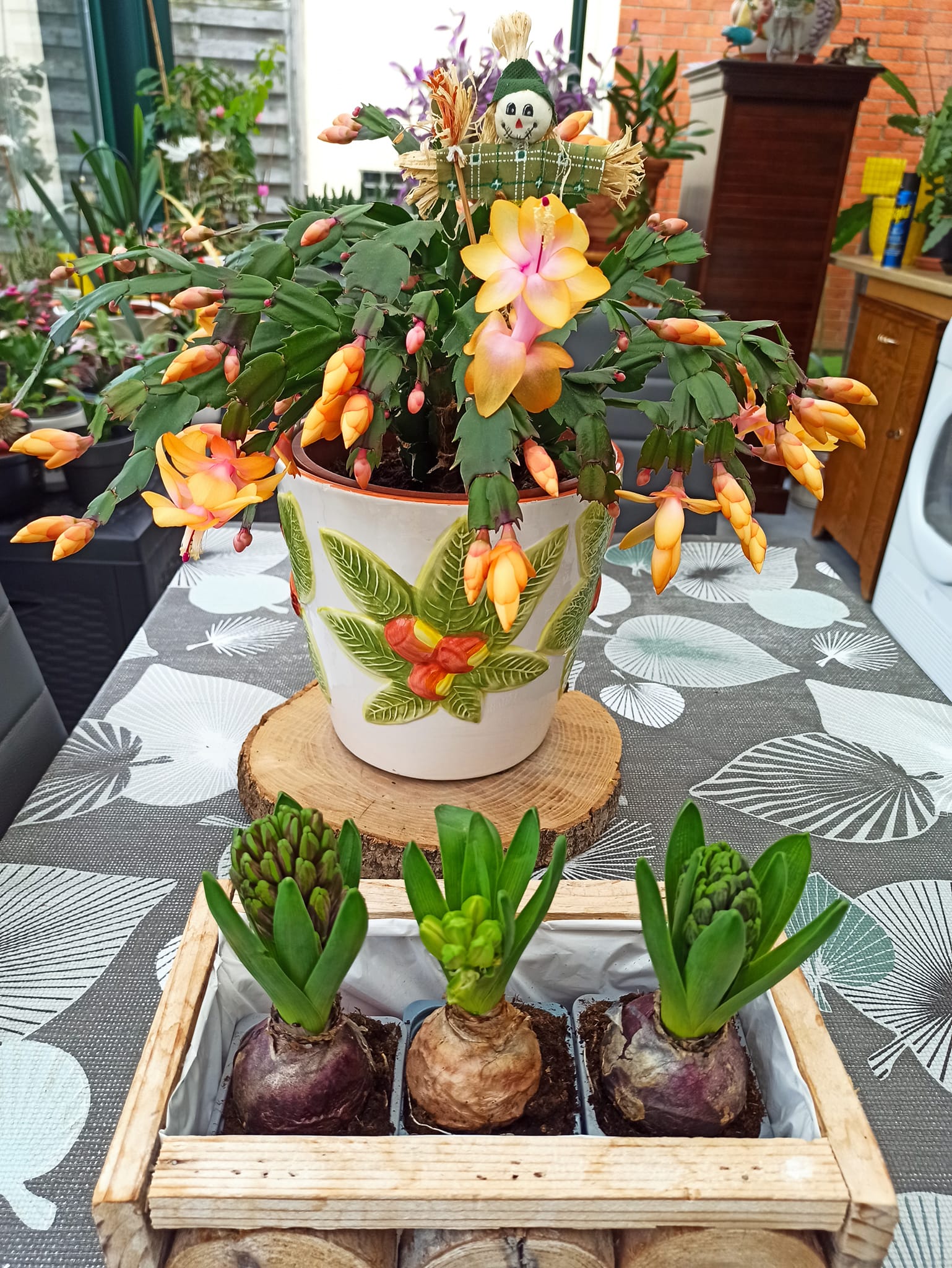The Christmas cactus (Schlumbergera) is a popular indoor plant celebrated for its spectacular array of blooms in shades of red, white, pink, purple, and even yellow during the holiday season. This plant originates from the rainforests of Brazil, where it grows as an epiphyte, meaning it uses other plants for support but not nutrients. In this guide, we’ll learn how to propagate and grow this stunning plant to add a touch of festive beauty to your home or garden.
Propagation of the Christmas Cactus

Propagation is the process of creating new plants from the parent plant. Christmas cactus propagation can be achieved by taking cuttings. Follow these steps to successfully propagate your Christmas cactus:
Choose the Right Time: The best time to take a cutting is in spring, just after the blooming period.
Select the Segment: Choose a healthy-looking stem segment of 2-3 joined leaf sections. Ensure that the selected stem is mature – dark green, not brown or yellow.
Cut the Segment: Using a clean, sharp knife or scissors, make a clean cut between segments.
Let it Heal: Allow the cutting to dry for a few hours or overnight. This enables the cut to callus over and prevents rot when planted.
Plant the Cutting: Once the cut end is callused, plant the cutting in a small pot with well-draining soil, ideally a mix of half potting soil and half perlite or sand. Insert the end of the cutting about an inch into the soil.
Water Carefully: Water the cutting sparingly until it shows signs of growth. Overwatering can cause rot.
Wait for Rooting: Roots will typically form in 3-6 weeks. Once roots have established, you can treat the new plant like a mature Christmas cactus.
Caring for Your Christmas Cactus

To ensure the growth and flowering of your Christmas cactus, you’ll need to create an environment similar to the humid, shaded understorey of a tropical rainforest. Here are some important care tips:
Light: The Christmas cactus prefers bright, indirect light. Direct sunlight can scorch the leaves.
Water: This plant likes its soil to be consistently moist but not waterlogged. Overwatering can cause root rot. Water thoroughly when the top inch of soil feels dry to the touch.
Temperature: Ideal temperatures are between 60-70°F (15-21°C). It can tolerate lower temperatures but is not frost-tolerant.
Humidity: As a tropical plant, Christmas cactus prefers high humidity. If your home is dry, you can increase humidity by placing a tray of water near the plant or using a humidifier.
Fertilization: During the growing season (spring and summer), you can feed your Christmas cactus with a balanced, water-soluble fertilizer every 2-4 weeks. Do not fertilize during the plant’s rest period in fall and winter.
Pruning: Pruning in late spring, after blooming, can encourage the plant to branch out. Simply pinch off a few segments from each stem.
Flowering: To stimulate the Christmas cactus to bloom, it needs a period of cool temperatures (around 55°F or 12-13°C) and darkness (at least 13 hours a day) for about 6 weeks. After this period, increase light and temperature, and the plant should bloom.
Propagation and growing a Christmas cactus can be a rewarding horticultural experience, and with the right care, this gorgeous plant will brighten your holidays for many years to come. Happy planting!
